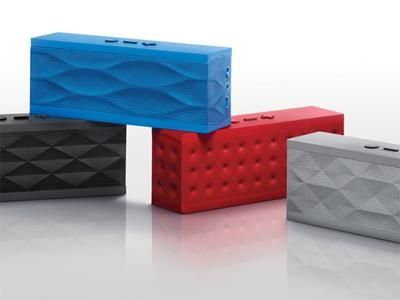To help you choose a pair of cordless speakers, I am going to clarify the term “signal-to-noise ratio” which is regularly utilized in order to explain the performance of cordless speakers.

As soon as you have chosen a range of cordless loudspeakers, it is time to explore several of the specifications in more detail in order to help you narrow down your search to one product. The signal-to-noise ratio is a fairly important parameter and describes how much noise or hiss the cordless loudspeaker produces.

Comparing the noise level of different sets of wireless speakers shown at www.amphony.com can be done rather easily. Just gather a couple of types that you want to compare and short circuit the transmitter audio inputs. After that put the wireless speaker volume to maximum and check the amount of static by listening to the speaker. The noise that you hear is produced by the wireless loudspeaker itself. Make sure that the gain of each pair of cordless loudspeakers is set to the same amount. Otherwise you will not be able to objectively compare the level of noise between several models. The general rule is: the smaller the level of static which you hear the better the noise performance. Whilst taking a look at the cordless loudspeaker spec sheet, you want to look for a pair of wireless speaker with a high signal-to-noise ratio number which suggests that the wireless speakers output a small level of noise. There are a number of reasons why wireless speakers will add some form of noise or other unwanted signal. Transistors and resistors which are part of each modern wireless speaker by nature produce noise. The overall noise is dependent on how much noise every element generates. Nonetheless, the location of those elements is also essential. Elements that are part of the speaker built-in amp input stage are going to generally contribute the majority of the noise.

The cordless transmission itself also causes noise that is most noticable with products which make use of FM transmission at 900 MHz. Other wireless transmitters will interfer with FM type transmitters and cause further noise. Thus the signal-to-noise ratio of FM type wireless speakers varies depending on the distance of the speakers from the transmitter plus the level of interference. To steer clear of these problems, modern transmitters use digital audio transmission and usually transmit at 2.4 GHz or 5.8 GHz. The signal-to-noise ratio of digital transmitters is independent from the distance of the cordless loudspeakers. It is determined by how the music signal is sampled. In addition, the quality of components inside the transmitter are going to influence the signal-to-noise ratio. Most of recent cordless speakers use power amplifiers which are digital, also called “class-d amps”. Class-D amps use a switching stage that oscillates at a frequency between 300 kHz to 1 MHz. This switching frequency is also hiss that is part of the amplified signal. Nonetheless, today’s cordless loudspeakerspecifications typically only consider the hiss between 20 Hz and 20 kHz.

The signal-to-noise ratio is measured by inputting a 1 kHz test tone 60 dB underneath the full scale and measuring the noise floor of the signal generated by the built-in amplifier. The gain of the cordless speaker is couple such that the full output wattage of the built-in amp can be achieved. Subsequently, only the hiss in the range of 20 Hz and 20 kHz is considered. The noise at different frequencies is eliminated via a filter. Then the level of the noise energy in relation to the full-scale output power is computed and expressed in decibel.

A different convention to state the signal-to-noise ratio utilizes more subjective terms. These terms are “dBA” or “A weighted”. You are going to spot these terms in a lot of cordless loudspeaker spec sheets. This technique was designed with the knowledge that human hearing perceives noise at different frequencies differently. Human hearing is most perceptive to signals around 1 kHz. On the other hand, signals under 50 Hz and higher than 13 kHz are hardly noticed. The A-weighted signal-to-noise ratio is usually higher than the unweighted ratio and is published in the majority of wireless loudspeaker spec sheets.

